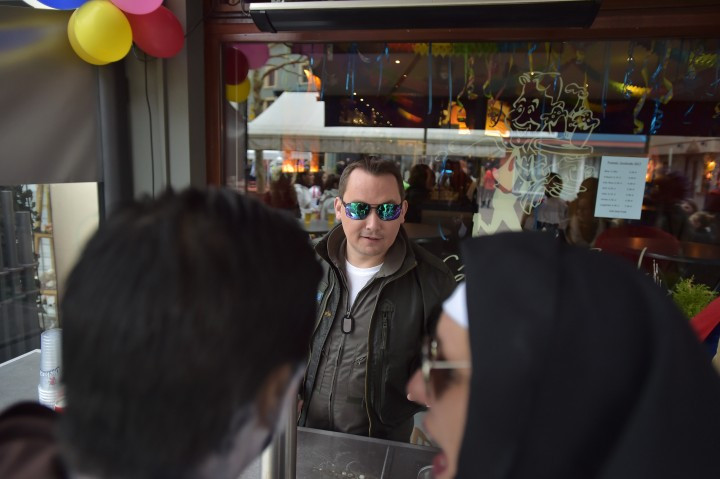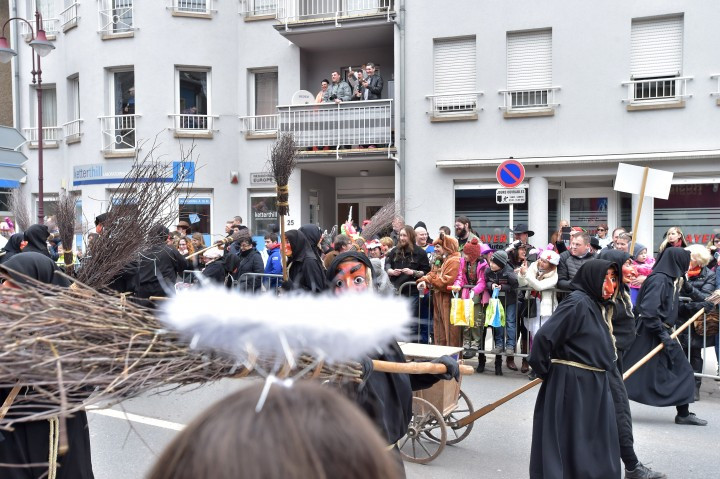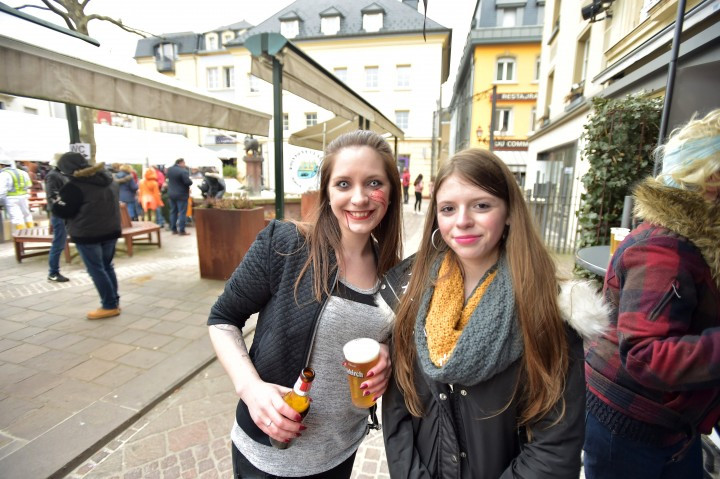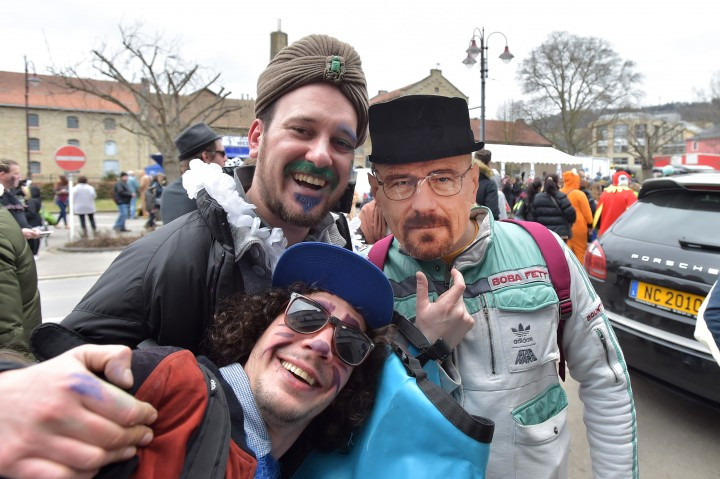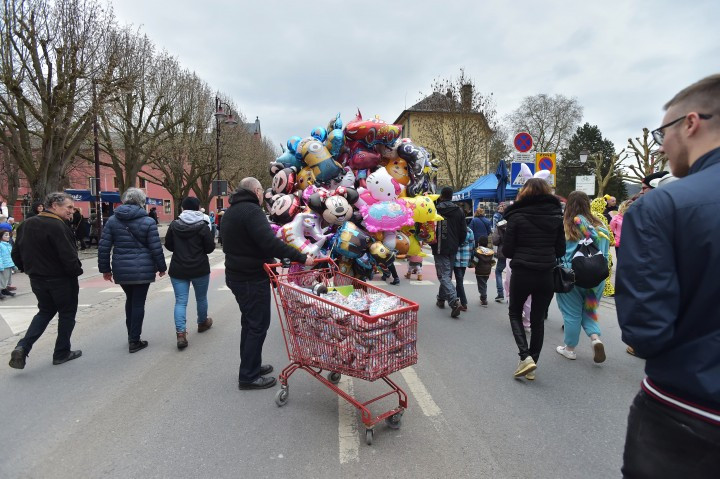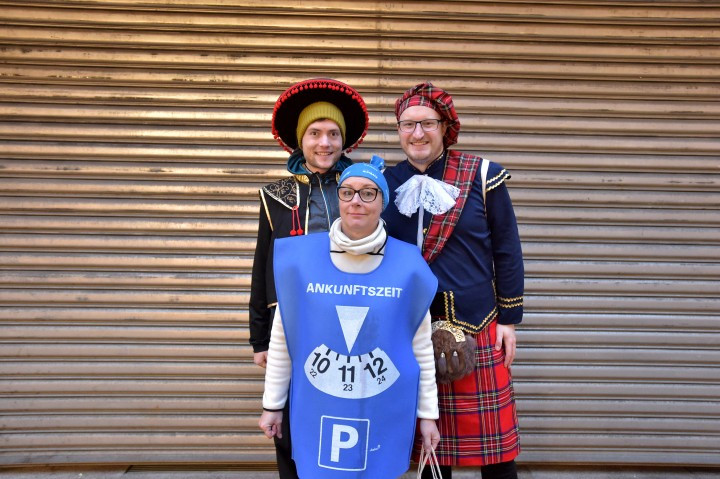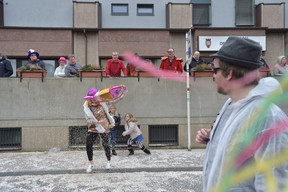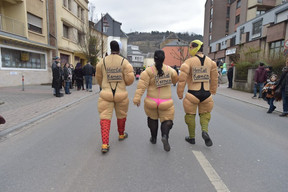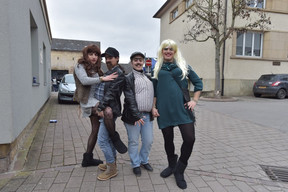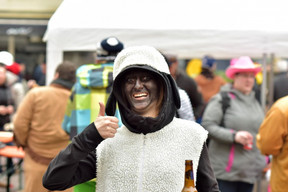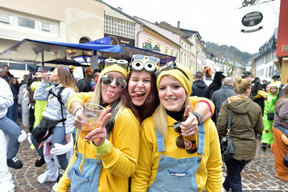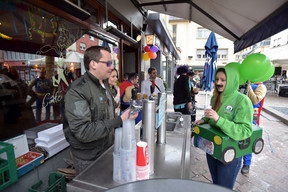They were ready to accommodate the around 20,000 people that flock yearly to Diekirch to celebrate carnival. Apart from the “Aal Dikrich” (old Diekirch) festival and the Christmas market, the cavalcade is one of the biggest days for the many bars in Diekirch.
The owner of the Beim Frank café for the past 12 years, Frank Dillmann, told Delano prior to the festivities:
“The preparations start two weeks before. Placing the orders, finding extra staff… it is not my first cavalcade. I order a certain average of beer kegs and so far it was always enough. We usually order four times that of a normal weekend. Today we have a staff of five, which is two more than usual.”
Paulo Moreira, manager of the Little Pub and owner of the Grill restaurant, which lies directly on the route of the parade, said that his major preparations were for the restaurant:
“We don’t have an additional beer counter outside the café, but here at the restaurant we do. We order twice as much beer than usual. We usually have four kegs a week, but for the cavalcade we order eight. We don’t employ more staff, it’s the same personnel but they work all day. Instead of working 8 hours, they work all day until 1 am.”
At the restaurant, they sell food to the customers outside:
“We rent the grill, pay the local council for the authorisation to sell thuringers, pork chops, mettwurst and burgers. We have ordered 500 pieces in total, but I don’t know if we’ll sell everything!”
However, some see it as not so much of a boon for their business. Fabian Paladino, manager of the Capuccino, a cocktail bar at the top of the Place de la Libération on the high street, argued that:
“The cavalcade is a good bonus for many cafés but not everyone necessarily profits from it, because we have so many cafés here in Diekirch. It’s all about location: some have a better location than others.”
Three cafés have paid for a DJ to play at that main square for the second year in a row. Beim Frank, Beim Louis, and Dikricher Stuff all chipped in to keep people around, as there is a party in the Aal Séerei near the train station after the parade.
Paladino explained how the crowds move around a lot:
“At the cavalcade, people are moving constantly--they don’t stay in one place. You may have huge crowds for two hours or so, then people go see the parade, then they may come back or may go somewhere else.”
Dillmann argues that:
“Of course it’s expensive [for bar and café owners] but it draws people to the main square. When the parade is over around 5 or 6 o’clock, people flock to the cafés, and when there is a DJ and with this good weather the atmosphere is perfect! The DJ plays from 4 to 10 and afterwards people go to the cafés to party.”
They all argree however that the cavalcade gives Diekirch more visibility. Paladino said proudly: “For the town itself it’s brilliant--Diekirch has a cult status because of its cavalcade.”

